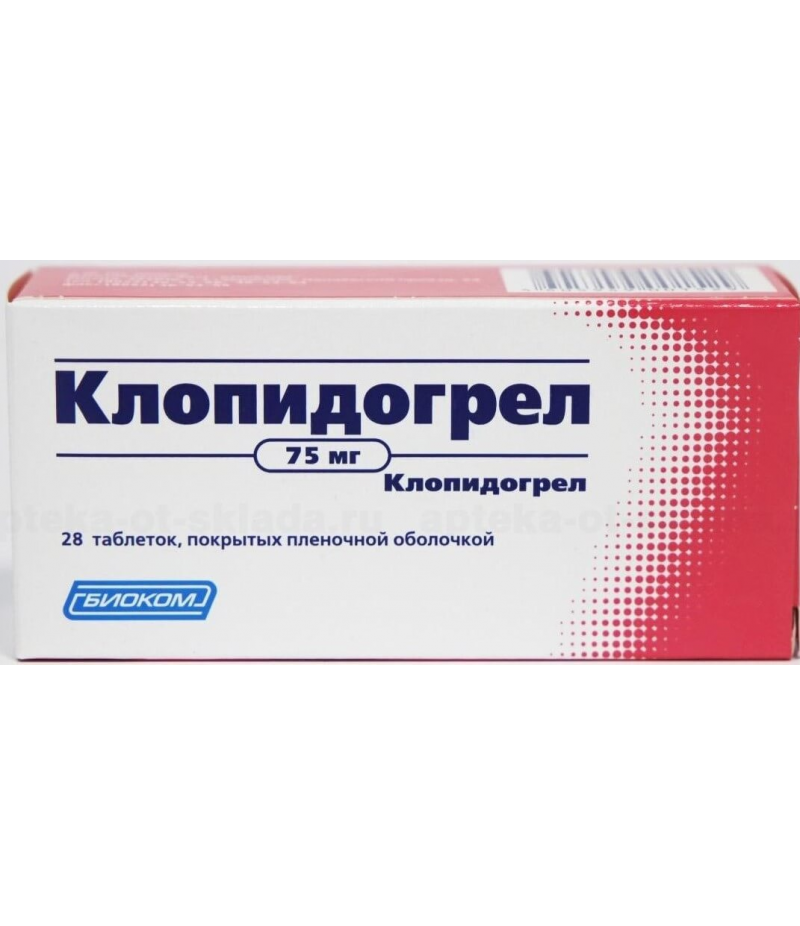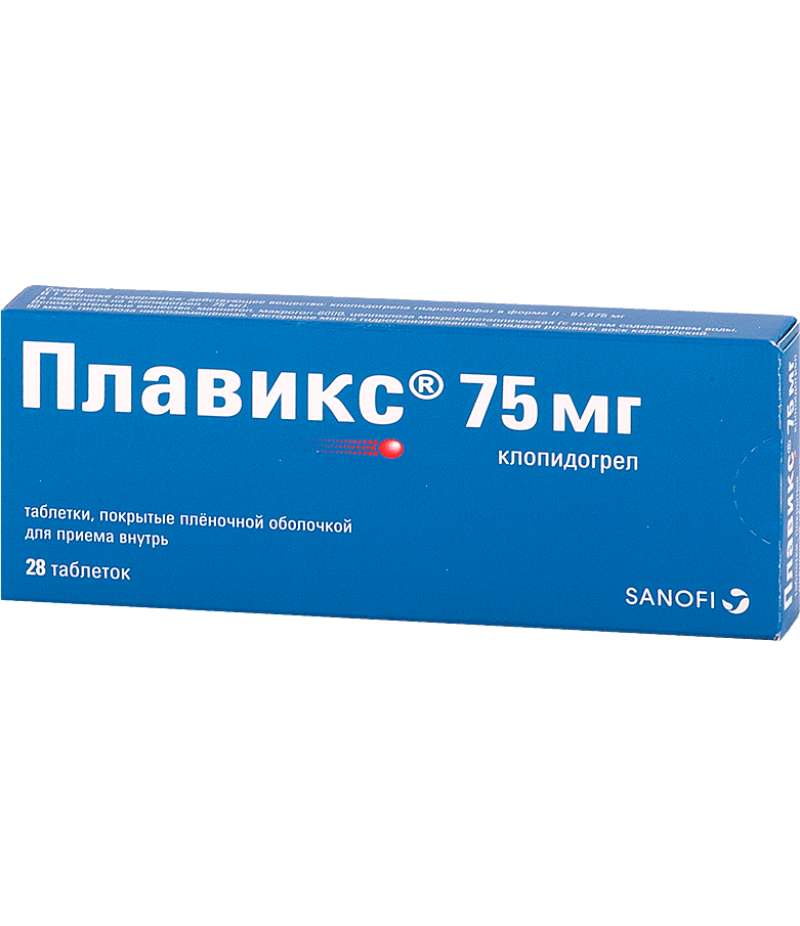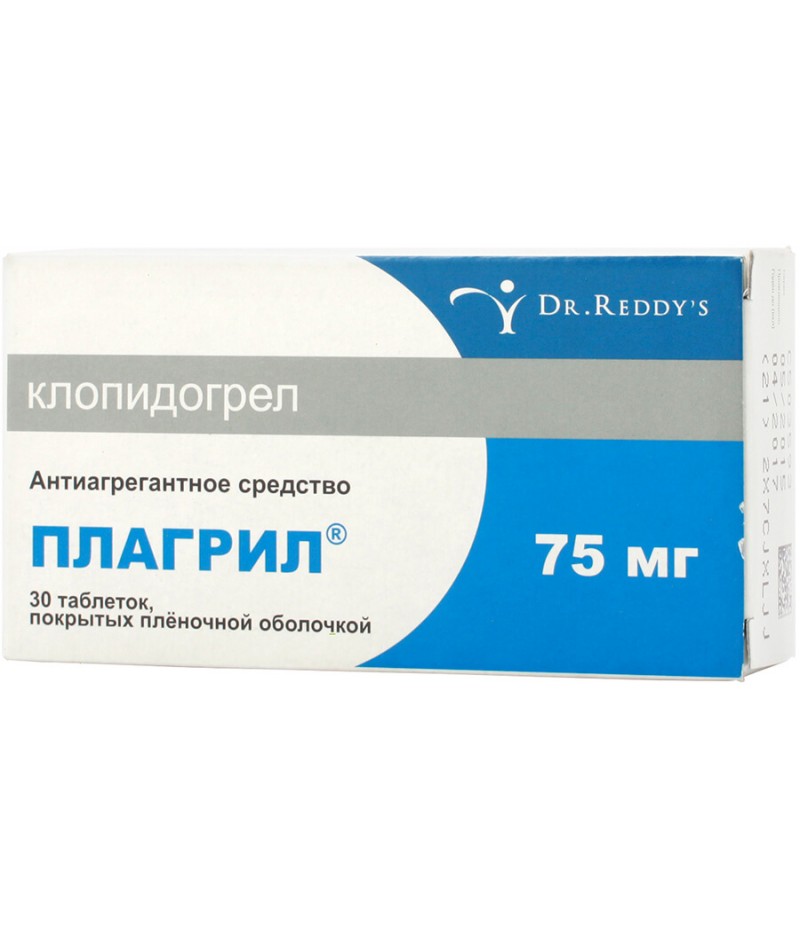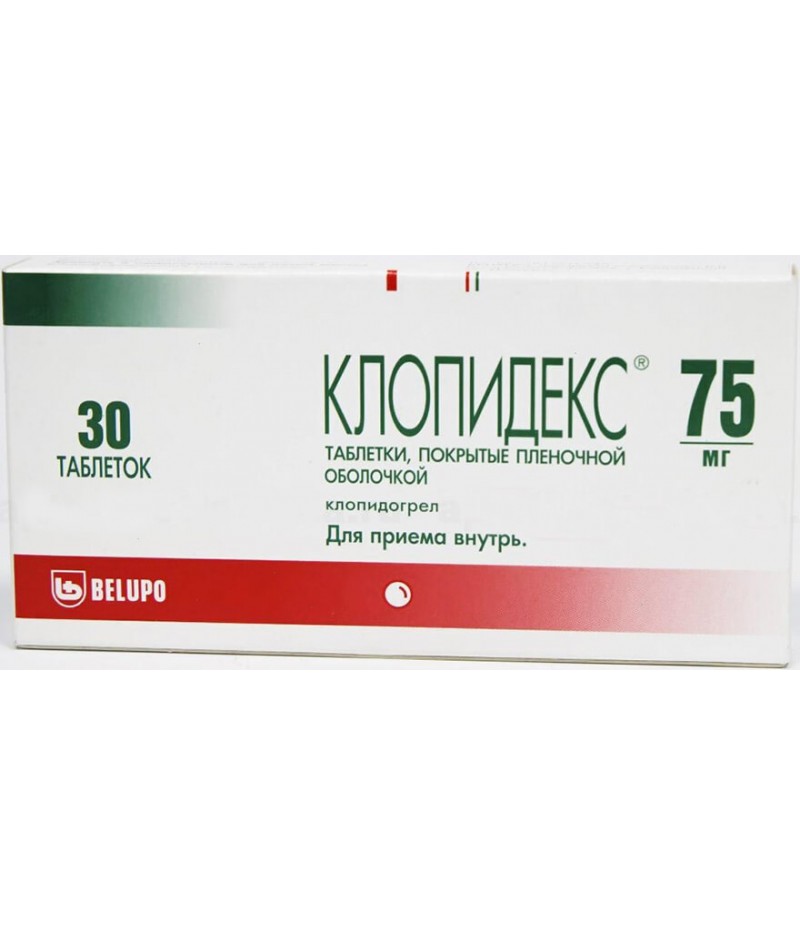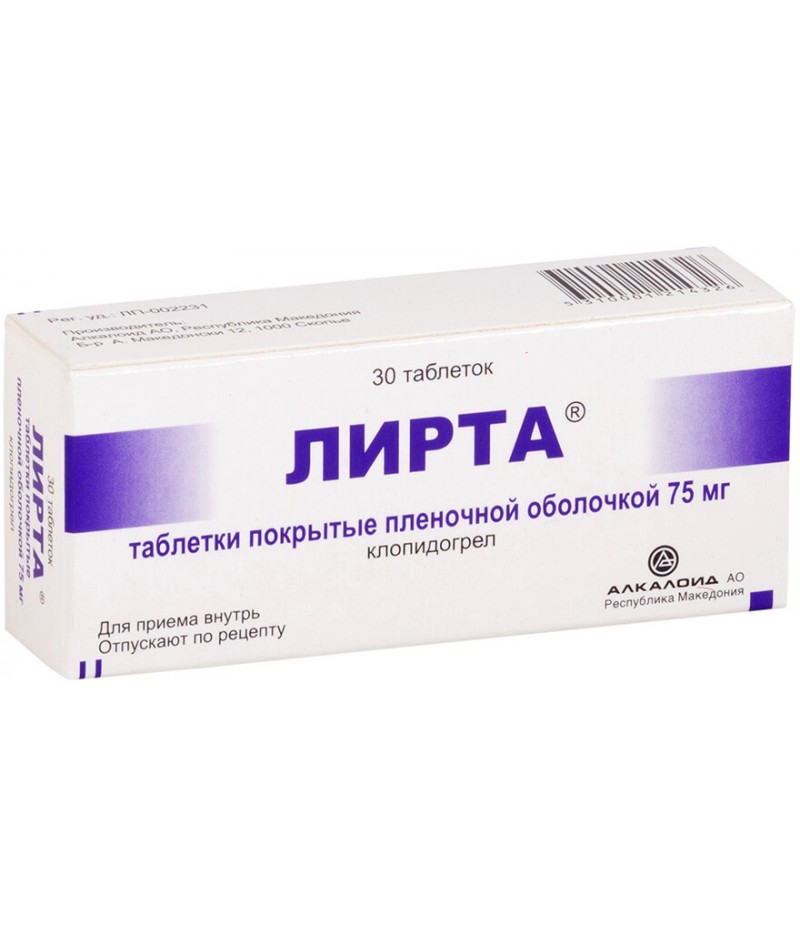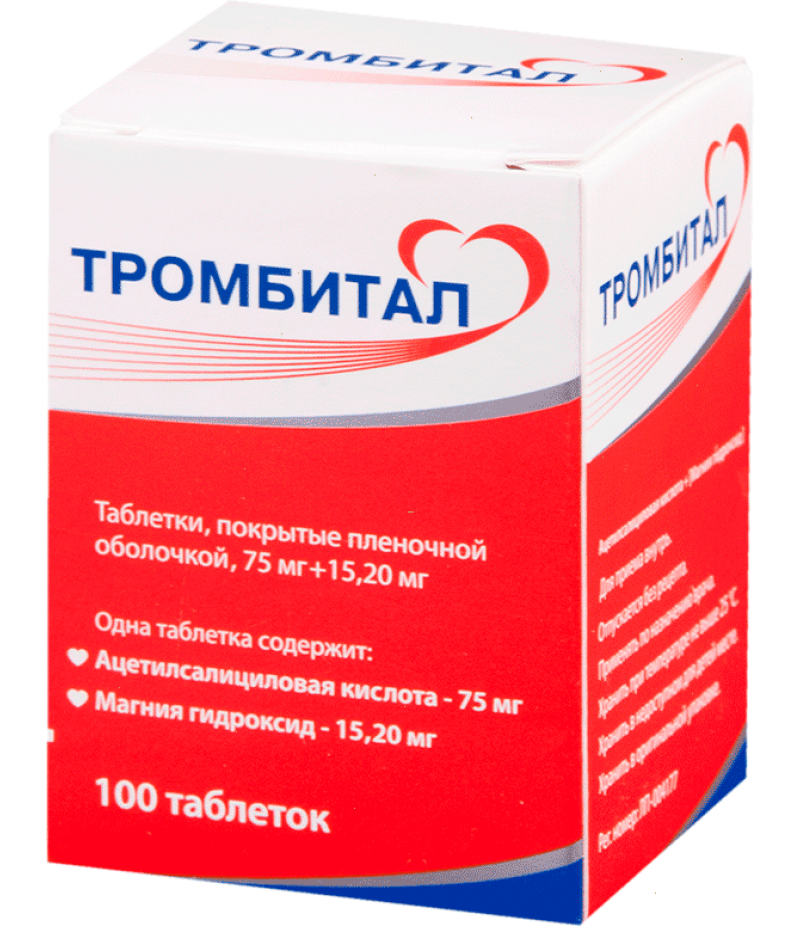Clopidogrel tabs 75mg #28
- $28.93
- 3 or more $27.99
- Availability:In Stock
Clopidogrel instructionReed more and buy Clopidogrel pills on this pageCompositionThe tablet of Clopidogrel contains 75 mg of the same substance as hydrogensulfate.Additional substances: salted, lactose monohydrate, colloidal sili..
Tags: tabs
Clopidogrel instruction
Reed more and buy Clopidogrel pills on this page
Composition
The tablet of Clopidogrel contains 75 mg of the same substance as hydrogensulfate.
Additional substances: salted, lactose monohydrate, colloidal silicon dioxide, sodium croscarmellose, sodium stearyl fumarate.
Composition of the shell: pink opadray II (hypromellose, lactose monohydrate, titanium dioxide, carmine, yellow iron oxide, macrogol), emulsion silicone.
Form of issue
Pink round tablets, coated with a shell, biconvex form; on a cut - white-yellow color.
14 tablets in a package outline; 1 or 2 packs in a pack of paper.
7 or 10 tablets in a package outline; 1, 2, 3 or 4 packages in a pack of paper.
7 or 10 tablets in a blister; 1, 2, 3 or 4 blisters in a pack of paper.
14 or 28 tablets in a polymer vial; 1 bottle in a pack of paper.
14 or 28 tablets in a polymer bank; 1 can in a pack of paper.
pharmachologic effect
Antiaggregant effect.
Pharmacodynamics and pharmacokinetics
Pharmacodynamics
The drug inhibits the aggregation of platelets. Selectively inhibits the binding of adenosine diphosphate to the receptors on the walls of platelets and induction of the GPIIb / IIIa complex, thereby inhibiting the adhesion of platelets. Also platelet aggregation caused by other agonists is blocked, due to the stopping of platelet stimulation by released adenosine diphosphate. The action of Clapidogrel does not affect the activity of phosphodiesterase.
Irreversibly transforms adenosine diphosphate receptors on platelets, so they remain non-functional until the moment of their natural death, and the restoration of the physiological function occurs in the process of their renewal (about a week).
Pharmacokinetics
Quickly absorbed from the intestine. Concentration in the blood increases slightly. Intensively transformed in the liver. The main metabolite is inactive and amounts to 85% of the initial substance present in the plasma.
Binding to plasma proteins by 94-98%. Half of the dose is evacuated by the kidneys, another 46% with feces. The half-life is approximately 8 hours.
Indications for use
The drug has the following indications for use:
prevention of thrombotic complications in patients with ischemic stroke, myocardial infarction or impaired lumen of peripheral arteries. It is used together with acetylsalicylic acid to prevent thrombotic events in acute coronary syndrome;
prevention of thrombotic and thromboembolic complications in atrial fibrillation, with at least one factor of vascular complications, with the impossibility of using indirect anticoagulants and low probability of bleeding.
Contraindications
Hypersensitivity to the components of the drug, severe hepatic insufficiency, pregnancy and lactation, acute bleeding, age to 18 years.
Side effects
Common reactions: fever.
Reactions from the digestive system: development of gastrointestinal bleeding, diarrhea, abdominal pain, duodenal ulcer or stomach ulcer, vomiting, constipation, nausea, dyspepsia, retroperitoneal hemorrhage, pancreatitis, colitis, hepatic insufficiency, hepatitis, stomatitis , changes in liver function.
Reactions from the coagulation system: prolongation of bleeding time, development of bleeding.
Reactions from the hematopoietic system: thrombocytopenia, leukopenia, eosinophilia, neutropenia, thrombocytopenic purpura, anemia, pancytopenia, severe granulocytopenia, thrombocytopenia, agranulocytosis.
Reactions from the senses: a change in taste perception, hemorrhages in the eye area, vertigo.
Reactions from the nervous system: hallucinations, headache, intracranial hemorrhage, dizziness, paresthesia, confusion.
Reactions from the respiratory system: bronchospasm, pulmonary or nasal bleeding, interstitial pneumonia.
Reactions from the circulatory system: vasculitis, pressure reduction.
Reactions from the side of immunity: allergic reactions, serum sickness is possible.
Reactions from the musculoskeletal system: myalgia, arthritis, intraarticular and intramuscular hemorrhages, arthralgia.
Reactions from the skin: subcutaneous hemorrhage, urticaria, rash, purpura, pruritus, bullous dermatitis, angioedema, eczema.
Reactions from the excretory system: hematuria, an increase in creatine content in the blood, glomerulonephritis.
Instructions for use Clopidogrel (Method and dosage)
The scheme of use of the drug depends on the individual clinical situation and is developed by the attending physician.
Clopidogrel, instructions for use
The drug is taken orally one tablet a day, regardless of the meal. The initial and maintenance dosage is 75 mg per day. The loading dosage is 300 mg per day.
Overdose
In case of an overdose with Clopidogrel, an elongation of the bleeding time with characteristic complications is possible. Symptomatic treatment is performed.
The selective antidote is unknown. In the case of an urgent need to immediately reduce the time of bleeding is shown the introduction of platelet mass.
Interaction
When combined with a non-steroidal anti-inflammatory drug, the likelihood of bleeding of the gastrointestinal localization increases.
When combined with acetylsalicylic acid, an increase in the antiplatelet effect is likely.
Since clopidogrel inhibits the isoenzyme CYP2C9, when combined with agents transformed with the participation of CYP2C9 (eg, tolbutamine and phenytoin), an increase in their concentrations in the blood can not be ruled out.
Storage conditions
Store at temperatures up to 25 degrees. Keep away from children.
Shelf life - 3 years.
special instructions
It is advised to use the preparation with caution when using Heparin, Warfarin, non-steroidal anti-inflammatory drugs, acetylsalicylic acid (with long-term admission).
When identifying signs of excessive bleeding (menorrhagia, bleeding gums, hematuria), it is recommended that the coagulogram be performed and that the laboratory performance of the liver is constantly monitored.
With special care use the drug with increased probability of bleeding due to injuries, surgical interventions, changes in the system of hemostasis, as well as in individuals with severe liver damage.
The effect of the drug on the ability to drive vehicles has not been documented.
Children
It is forbidden to prescribe a drug to persons under 18 years of age.
In pregnancy and lactation
The drug is not assigned to these periods.
Reviews about Clopidogrel
There are numerous reviews of clopidogrel from patients who have had severe illnesses and operations (such as stenting) that highly evaluate the drug. However, this tool is not intended for self-treatment, its appointment and performance monitoring should be carried out by an experienced specialist.

